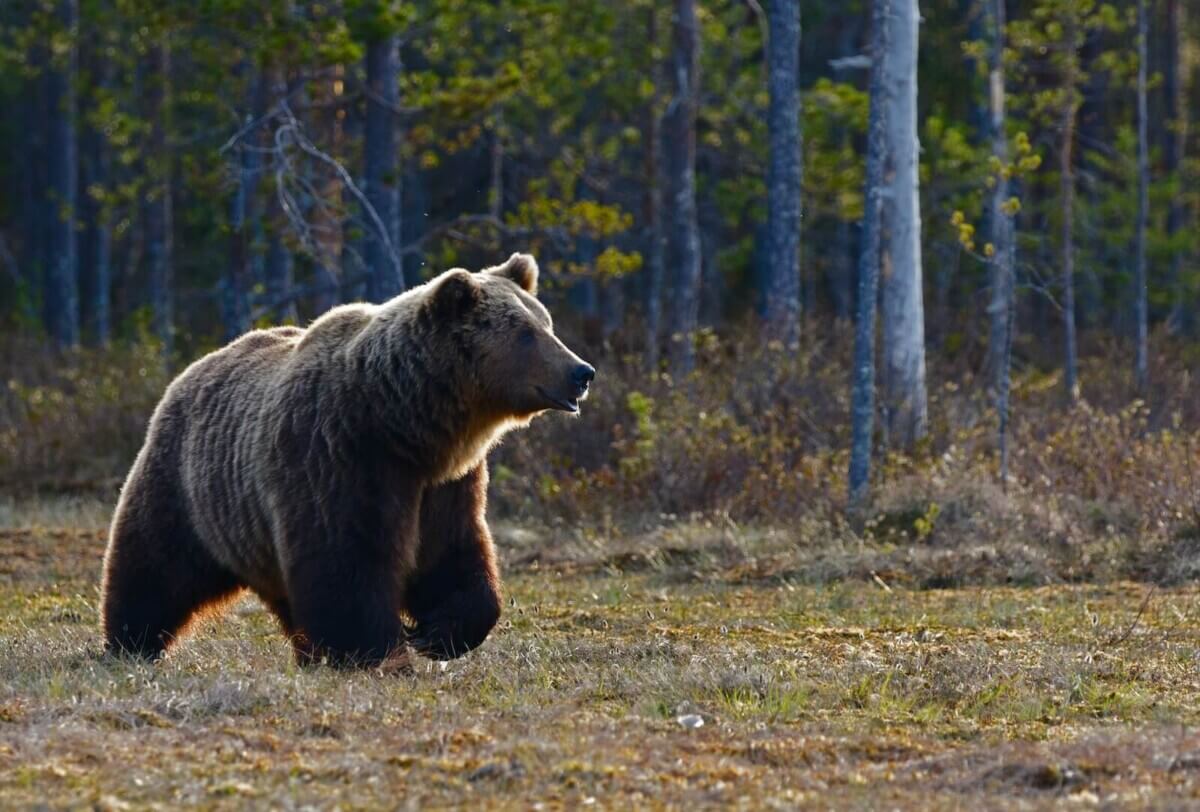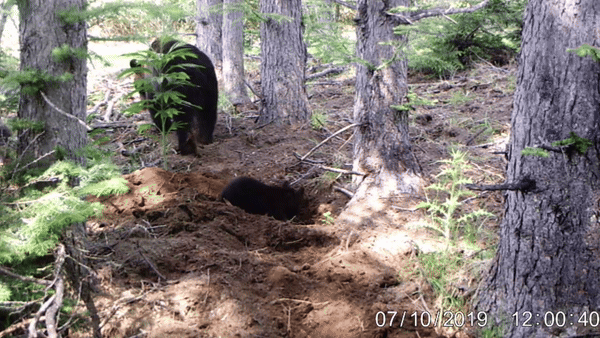
Brown bear walking near trees (Photo by Zdeněk Macháček on Unsplash)
TOKYO, Japan — When it comes to the “bear necessities,” it appears that artificial forests don't make the cut. A strange turf war is brewing in Japan, where one of the world's largest populations of brown bears is apparently taking issue with humans planting new forests in their back yard. Researchers have discovered that these bears are ripping up trees near their natural habitats — but only the ones humans are planting!
Researchers from Kochi University and the University of Tokyo observed that the brown bears, in their quest for food, are hindering the growth of artificially planted conifer forests by digging for cicada nymphs, a surprise food source for them. This behavior, unique to the human-created forests, is causing damage to tree roots and altering the soil's nitrogen levels, limiting the trees' growth. Conversely, the bears are leaving trees naturally growing in other local forests untouched and undisturbed.

The Shiretoko Peninsula, recognized globally as a World Nature Heritage site, hosts one of the densest populations of brown bears worldwide, with an estimated 500 bears living in a relatively small area. Efforts to restore the peninsula's natural forests have included planting conifers like larch and spruce on abandoned farmland since the 1970s. However, this well-intentioned act has led to some surprising consequences.
“In our latest study, we found that brown bears have been negatively impacting the growth of replanted larch conifer trees. They come to the new forests to dig for cicada nymphs, a behavior we haven’t seen in natural woodland or heard reported elsewhere in the world,” says Professor Tsutom Hiura from the University of Tokyo in a media release. “While mammalian digging behavior in natural ecosystems has typically been seen as having a positive influence, our research shows that the outcome is different in anthropogenic (human-made) landscapes.”

Hiura and Assistant Professor Kanji Tomita note that while animal digging is often considered beneficial in natural ecosystems, promoting soil health and plant growth, the effects in artificial forests are markedly different. The team's research involved comparing soil and tree samples from areas affected by the bears' digging and those left undisturbed. They observed a significant decrease in root biomass, soil water content, and nitrogen availability in the areas where bears had dug, leading to reduced tree growth. Their findings challenge previous assumptions about the role of large mammals in ecosystem dynamics, particularly in landscapes altered by human activity.
“Previous studies have not considered the human impacts of forestation efforts because data were collected from natural ecosystems. So, this study is important for wildlife conservation and understanding the roles of large mammals in anthropogenic landscapes,” explains Tomita. “Referring to knowledge from only pristine ecosystems is not sufficient. To develop more appropriate management strategies for large carnivores, we need to further understand their ecosystem roles in human-made landscapes.”
“Rather than rely on artificial afforestation (converting land into forest) methods, this research highlights the necessity of introducing natural regeneration methods by seed dispersal from the surrounding area,” adds Hiura. “This will not only restore ecosystems with high species diversity and rich interactions among animals and plants, but it will also be beneficial to human society in the long term.”
The team notes that bears in Shiretoko and other parts of Japan have been struggling to find enough of their normal food sources, including salmon and nuts. Increased human development and portioning off their land has only exacerbated the problem. All of this increases the odds of a dangerous encounter between people and bears.
While new forests may help bears in the long run, they apparently have a problem with the way people are going about it. For now, brown bears could possibly start tearing up even more human-planted forests, as a double brood event is expected to take place this spring. Two separate waves of cicadas are scheduled to hatch at the same time in 2024 — meaning these brown bears digging for cicada nymphs could soon have an all-you-can-eat buffet on their paws.
This study is published in the journal Ecology.











looks like she is digging for something that smells good, maybe the fertilizer?